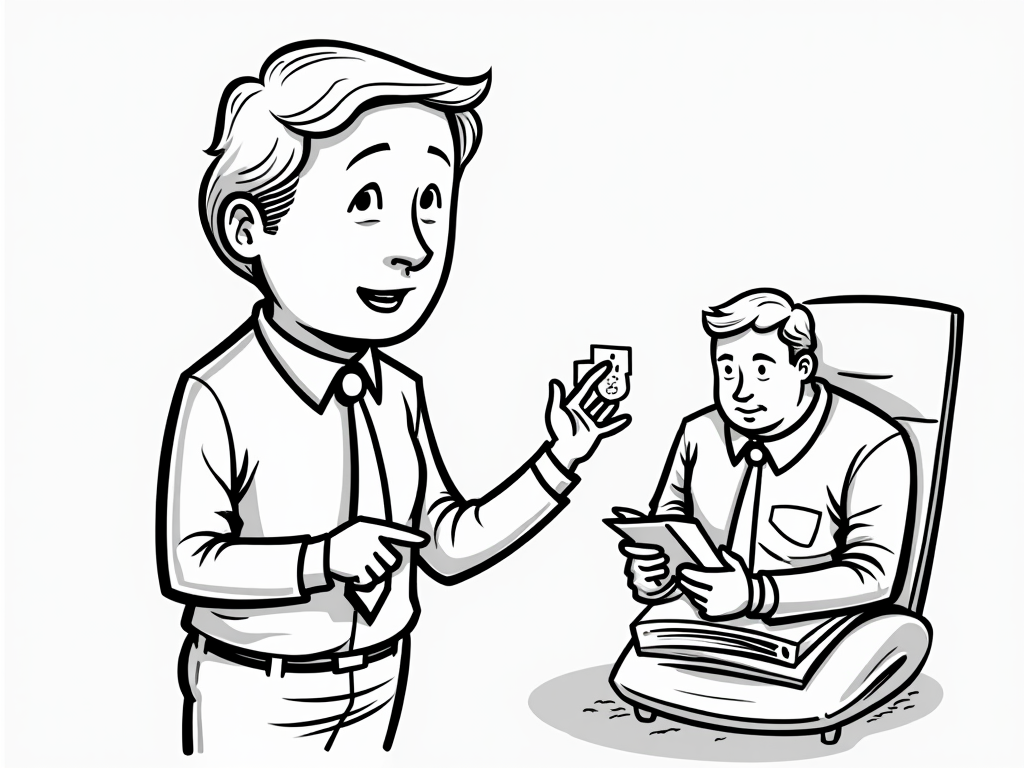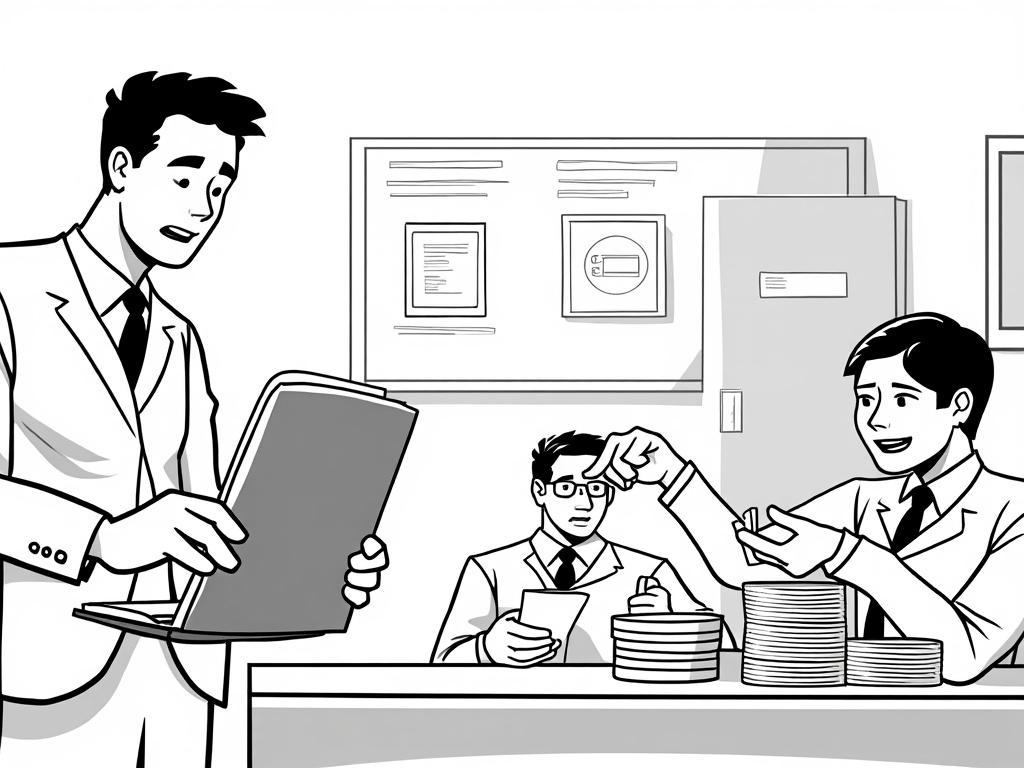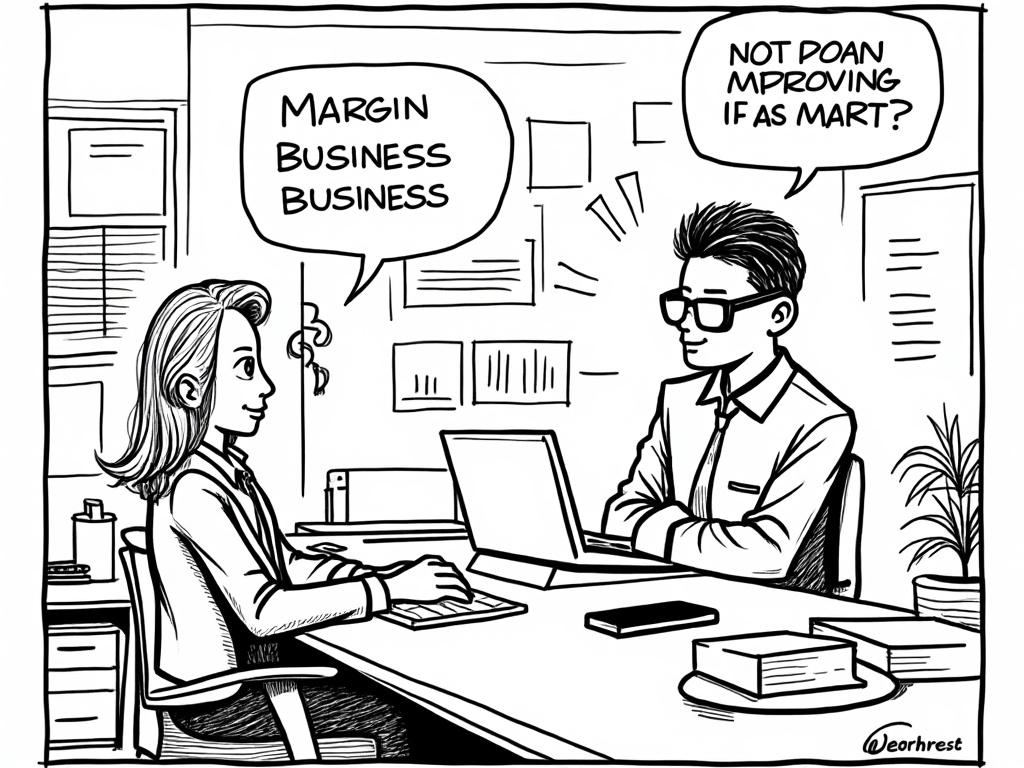
Germany VAT (MwSt) Rules: Essential Knowledge for New Businesses
Reading time: 8 minutes
Table of Contents
- Introduction to German VAT
- Understanding the Basics of German VAT
- VAT Registration Requirements
- German VAT Rates and Categories
- VAT Compliance and Reporting
- Common Challenges and Solutions
- Cross-Border Transactions and VAT
- Conclusion
- Frequently Asked Questions
Introduction to German VAT
Launching a business in Germany? You’re about to encounter the fascinating (and sometimes frustrating) world of Mehrwertsteuer (MwSt), Germany’s value-added tax system. While it might seem daunting at first glance, understanding German VAT is less about memorizing complex rules and more about developing a strategic approach to tax compliance.
The German VAT system isn’t just a bureaucratic hurdle—it’s an integral part of your business operations that, when managed properly, can prevent costly mistakes and even create cash flow advantages. Whether you’re a solo entrepreneur, a growing startup, or an international company expanding into the German market, mastering VAT essentials is non-negotiable.
Let’s be frank: many new businesses make avoidable VAT mistakes that lead to penalties, administrative headaches, and unnecessary stress. This guide aims to transform potential compliance challenges into strategic opportunities for your business.
Understanding the Basics of German VAT
At its core, German VAT (Mehrwertsteuer or MwSt, also frequently called Umsatzsteuer or USt) operates on a simple principle: it’s a consumption tax added at each stage of the production and distribution chain, with the final burden falling on the end consumer. But don’t let this simplicity fool you—the implementation details require careful attention.
How German VAT Works
Unlike in some countries, where sales tax is only applied at the point of sale, the German VAT system applies tax at every stage of the supply chain, with each business collecting and remitting its portion. As a business owner, you’ll:
- Charge VAT on applicable goods and services you sell (output tax)
- Pay VAT on applicable goods and services you purchase (input tax)
- Calculate the difference between what you’ve collected and what you’ve paid
- Remit the balance to the tax authority (or claim a refund if you’ve paid more than you’ve collected)
According to the German Federal Statistical Office, VAT revenue accounted for approximately €235 billion in 2021, representing almost 30% of Germany’s tax revenue. This underscores both its importance to the German economy and the rigorous enforcement you can expect.
Key Terminology
Before diving deeper, let’s clarify some essential terms you’ll encounter:
- Umsatzsteuer-Identifikationsnummer (USt-IdNr.): Your VAT identification number for European transactions
- Steuernummer: Your domestic tax number for German operations
- Vorsteuer: Input tax (VAT you pay on purchases)
- Umsatzsteuervoranmeldung: Preliminary VAT return
- Kleinunternehmerregelung: Small business regulation (VAT exemption for very small businesses)
As Professor Dr. Christoph Spengel from the University of Mannheim notes, “The complexity of German VAT lies not in its basic concept but in its myriad of exceptions and special provisions. New businesses must invest time in understanding not just the rules but the logic behind them.”
VAT Registration Requirements
One of the first questions you’ll face is whether and when to register for VAT in Germany. Let’s break down the essentials.
Who Must Register for VAT?
In Germany, VAT registration requirements depend on several factors:
- Businesses established in Germany: If your annual turnover exceeds €22,000 in the previous year or is expected to exceed €50,000 in the current year, registration is mandatory.
- Non-German businesses selling to German customers: Different thresholds apply depending on the type of supply, with many remote services requiring immediate registration regardless of turnover.
- Digital service providers: Special rules apply to businesses providing electronic services to German consumers.
Quick Scenario: Imagine you’re launching a web design agency in Berlin. Even if you expect modest revenues in your first year, you should consider VAT registration from day one. Why? Because your business-to-business clients will expect VAT invoices they can use for their own input tax deductions. Without registration, you might inadvertently limit your client pool.
The Registration Process
Registering for German VAT involves several critical steps:
- Complete the relevant tax registration forms (Fragebogen zur steuerlichen Erfassung)
- Submit the forms to your local tax office (Finanzamt)
- Wait for your tax number (Steuernummer) to be issued
- Apply for a VAT identification number (USt-IdNr.) if you’ll be conducting business with other EU countries
Be prepared for scrutiny during this process. German tax authorities often request additional information and may even conduct verification visits for certain business types. According to a 2022 survey by the German Chamber of Commerce, the average processing time for VAT registration is 4-6 weeks, though complex cases may take longer.
Pro Tip: Don’t wait until you exceed the threshold to begin the registration process. Start at least two months before you anticipate crossing the line to ensure seamless compliance from day one.
German VAT Rates and Categories
Germany operates with multiple VAT rates, and applying the correct rate to your products or services is crucial for compliance. Let’s explore the current rate structure and some common classification challenges.
Standard and Reduced Rates
| VAT Rate | Percentage | Applies To | Examples | Common Mistakes |
|---|---|---|---|---|
| Standard Rate | 19% | Most goods and services | Electronics, clothing, consulting services | Assuming professional services always qualify for standard rate |
| Reduced Rate | 7% | Essential goods, cultural items | Books, food, public transportation | Misclassifying food products (prepared vs. basic) |
| Zero Rate | 0% | Exports, international transport | Goods exported outside the EU | Failing to collect proper export documentation |
| Exempt | N/A | Banking, healthcare, education | Medical treatments, insurance | Confusing exempt with zero-rated transactions |
The classification of your goods or services can have significant financial implications. For instance, a restaurant meal is typically subject to 19% VAT, while takeaway food might qualify for the reduced 7% rate. Such distinctions routinely cause confusion for new businesses.
Classification Challenges
Product and service classification for VAT purposes can be surprisingly complex. Consider these examples:
- Digital products: E-books are subject to 7% VAT, similar to physical books, but many digital services fall under the standard 19% rate.
- Food and beverages: The boundary between standard and reduced rates for food items can be notoriously blurry. A coffee consumed in a café (19%) versus one taken to go (7%) illustrates this complexity.
- Mixed supplies: When you provide multiple elements together (like a product with accompanying service), determining the appropriate rate requires careful analysis.
As tax advisor Maria Schmitz from PwC Germany explains, “Many businesses underestimate the complexity of product classification. We regularly see authorities reclassifying items during audits, leading to significant unexpected tax liabilities for businesses that applied incorrect rates.”
VAT Compliance and Reporting
Once registered, your VAT obligations extend well beyond simply collecting the tax. You’ll need to establish robust compliance processes to avoid penalties and ensure timely reporting.
Invoice Requirements
German VAT law specifies strict requirements for invoices. Every invoice you issue must include:
- Your full name and address
- Your tax number or VAT identification number
- The customer’s full name and address
- A unique, sequential invoice number
- The invoice date
- The quantity and nature of goods/services provided
- The date of supply (if different from the invoice date)
- Net amount, applicable VAT rate, and VAT amount
- Any applicable discount terms
For invoices exceeding €250, additional information may be required. Electronic invoicing is permitted, but you must ensure the authenticity and integrity of the data.
Filing and Payment Deadlines
The frequency of your VAT filings depends on your previous year’s tax liability:
- Monthly filing: Required if your annual VAT liability exceeds €7,500
- Quarterly filing: For businesses with annual VAT liability between €1,000 and €7,500
- Annual filing: For businesses with annual VAT liability below €1,000
New businesses typically start with monthly filing obligations. Monthly returns are due by the 10th of the following month, with payment due by the same date. However, you can apply for a permanent extension (Dauerfristverlängerung), which gives you an extra month to file but requires an advance payment equal to 1/11 of your previous year’s tax liability.
Practical Roadmap for Compliance:
- Establish a robust invoicing system that meets all legal requirements
- Implement clear processes for distinguishing between different VAT rates
- Set up a reliable tracking system for filing deadlines
- Consider automation tools for VAT calculation and reporting
- Budget for VAT payments to avoid cash flow surprises
Common Challenges and Solutions
Even with careful preparation, new businesses often encounter VAT-related challenges. Let’s explore some common pitfalls and practical solutions.
Cash Flow Management
VAT can create significant cash flow pressure, especially for growing businesses. You might find yourself in situations where you’ve invoiced clients (and therefore owe VAT to the tax authority) but haven’t yet received payment.
Case Study: TechStart GmbH, a Berlin-based software development company, faced a serious cash crunch in its second year when several large clients delayed payments while the company still had to meet its VAT obligations. Their solution? They implemented upfront deposits for all projects exceeding €10,000, ensuring they always had sufficient cash to cover VAT liabilities. Additionally, they switched to the IST-Besteuerung (actual taxation) method once eligible, which allowed them to pay VAT only after collecting from customers.
Smart strategies to manage VAT-related cash flow include:
- If eligible, apply for the “IST-Besteuerung” method (paying VAT when you receive payment rather than when you issue invoices)
- Consider the timing of large purchases to optimize input tax recovery
- Set aside VAT collected from customers in a separate account
- Implement efficient invoicing and collection procedures
Cross-Border Complexity
Businesses operating across borders face additional VAT challenges. For instance, determining the place of supply for services can be particularly complex.
Business-to-business (B2B) services are generally taxed where the customer is established, while business-to-consumer (B2C) services are typically taxed where the supplier is located—but numerous exceptions exist.
To navigate these complexities:
- Clearly document the VAT status of all your customers (including validating their VAT numbers)
- Familiarize yourself with place of supply rules for your specific industry
- Consider utilizing the One-Stop Shop (OSS) system for B2C services within the EU
- Maintain detailed records of all cross-border transactions
Cross-Border Transactions and VAT
Cross-border trade adds another layer of complexity to VAT management. Whether you’re selling to EU countries or beyond, special rules apply.
Intra-EU Transactions
When trading with other EU businesses, the “reverse charge” mechanism often applies. Under this system:
- The supplier issues a VAT-free invoice (with the customer’s valid VAT number)
- The customer self-accounts for VAT in their own country
- The supplier must report these transactions in European Sales Lists (ESL)
Case Study: Handmade Designs KG, a craft furniture maker in Munich, expanded sales to retailers in France and Italy. Initially, they incorrectly charged German VAT on these sales. After a costly audit, they implemented a verification system that automatically validates customer VAT numbers and applies the reverse charge when appropriate. They also invested in software that generates their quarterly ESL reports, ensuring compliance without administrative burden.
Trade with Non-EU Countries
For exports outside the EU:
- Exports are generally zero-rated (exempt with credit), meaning no VAT is charged, but you maintain your right to recover related input VAT
- Proper export documentation is crucial to justify the zero-rating
- Import VAT may be due when bringing goods into Germany from non-EU countries
According to a 2022 report by the German Federal Ministry of Finance, import VAT processing represents one of the top compliance challenges for small businesses engaged in international trade. Many businesses fail to properly reclaim this tax, effectively reducing their profitability.
Well, here’s the straight talk: Successful international business expansion isn’t about perfection—it’s about strategic navigation of VAT requirements across different markets.
Conclusion
Navigating German VAT requirements may seem daunting at first, but with proper preparation and systems in place, it becomes a manageable aspect of your business operations. The key is to approach VAT strategically rather than reactively.
Remember these essential points:
- Register for VAT at the appropriate time—often earlier than you might think is necessary
- Implement robust systems for proper rate classification, invoicing, and record-keeping
- Anticipate cash flow implications and plan accordingly
- Pay special attention to cross-border transactions and their specific requirements
- Consider professional assistance for complex situations, especially during initial setup
By treating VAT compliance as a strategic business function rather than a mere administrative burden, you’ll not only avoid penalties and stress but potentially identify opportunities for optimization that your competitors might miss.
The German VAT system rewards those who understand it well. With the knowledge gained from this guide, you’re well-positioned to make VAT work for your business rather than against it.
Frequently Asked Questions
Can I voluntarily register for German VAT even if I’m below the threshold?
Yes, voluntary registration is possible and often advantageous. Even if your turnover is below the €22,000 threshold, registering for VAT allows you to reclaim input VAT on your business purchases, which can represent significant savings. Additionally, having a VAT number makes your business more attractive to other businesses that need VAT invoices for their own tax purposes. However, voluntary registration does come with compliance obligations, so weigh the administrative burden against the potential benefits.
How does the Kleinunternehmerregelung (small business regulation) work?
The Kleinunternehmerregelung exempts very small businesses from charging and remitting VAT if their turnover in the previous calendar year was below €22,000 and is not expected to exceed €50,000 in the current year. Under this scheme, you don’t charge VAT on your sales, but you also can’t reclaim input VAT on purchases. You must still issue invoices, but they should explicitly state that no VAT is charged due to the small business regulation. This exemption is not automatic—you must actively claim it on your tax registration. Also note that you’re bound to this decision for at least one full calendar year once you opt for it.
What are the potential penalties for VAT non-compliance in Germany?
German tax authorities take VAT compliance very seriously, with penalties that can quickly escalate. Late filing typically incurs a penalty of up to 10% of the tax due (maximum €25,000), while late payment triggers interest charges of 0.5% per month. In cases of negligence or deliberate non-compliance, penalties can reach 50% of the unpaid tax. For severe cases involving tax fraud, criminal proceedings may result in fines or imprisonment. Additionally, VAT audits can go back up to 10 years, meaning historical errors can result in substantial accumulated liabilities. The best protection is to establish proper compliance systems from the start and address any potential issues proactively through voluntary disclosure if errors are discovered.



